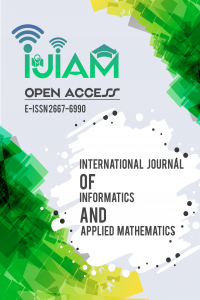Hourly Wind Speed Forecasting Using FFT-Encoder-Decoder-LSTM in South West of Algeria (Adrar)
Hourly Wind Speed Forecasting Using FFT-Encoder-Decoder-LSTM in South West of Algeria (Adrar)
___
- 1.Liu,H.,Mi, X.,Li, Y. : Smart multi-step deep learning model for wind speed forecasting based on variational mode decomposition, singular spectrum analysis, LSTM network and ELM. Energy Conversion and Management 159, 54–64 (2018).https://doi.org/10.1016/j.enconman.2018.01.010
- 2. Youssef,E.: Weather Forecasting Using Genetic Algorithm Based Artificial Neural Network in South West of Algeria (Béchar) In: Mustapha,H.: Artificial Intelligence in Renewable Energetic Systems, LNCS in Networks and Systems, vol. 35, pp. 273–280. Springer International Publishing AG (2018). https://doi.org/10.1007/978-3-319-73192-6_28
- 3. Shobana Devi, A., Maragatham, G. , Boopathi, K. , Rangaraj , A. G. : Hourly day-ahead wind power forecasting with the EEMD-CSO-LSTM-EFG deep learning technique. Methodologies and Application (2020). https://doi.org/10.1007/s00500-020-04680-7
- 4. Mishraa,S., Bordinb,C., Taharaguchia,K., Palua,I. : Comparison of deep learning models for multivariate prediction of time series wind power generation and temperature. Energy Reports 6,273–286 (2020). https://doi.org/10.1016/j.egyr.2019.11.009
- 5. Adam-latest-trends-in-deep-learning optimization, https://towardsdatascience.com/adamlatest-trends-in-deep-learningoptimization6be9a291375c,last accessed 2020/04/01.
- 6. Gentle Introduction to the Adam Optimization Algorithm for Deep Learning, https://machinelearningmastery.com/adam-optimization-algorithm-for-deep-learning/, last accessed 2020/05/03.
- 7. Moving Average Smoothing for Data Preparation and Time Series Forecasting in Python, https://machinelearningmastery.com/rectified-linear-activation-function-for-deep-learningneural-networks,last accessed 2020/05/12.
- 8. Raspisaniye Pogodi Ltd, “Weather for 243 countries of the world”. https://rp5.ru/Weather_in_the_world,last accessed 2020/04/07.
- 9. Normaliztion,https://www.codecademy.com/articles/normalization,latestaceees2020/04/03
- Başlangıç: 2018
- Yayıncı: International Society of Academicians
Imen BOULNEMOUR, Bachir BOUCHEHAM, Abdelmadjid LAHRECHE
A Deep Neural Network Model for Malware Detection
Fatima BOUREBAA, Mohamed BENMOHAMMED
A Comparison Study of Dynamic Time Warping’s Variants for Time Series Classification
Abdelmadjid LAHRECHE, Bachir BOUCHEHAM
Hourly Wind Speed Forecasting Using FFT-Encoder-Decoder-LSTM in South West of Algeria (Adrar)
Khouloud ZOUAİDİA, Salim GHANEMİ, Mohamed Saber RAİS
Evolutionary Encryption Algorithm Ensuring Privacy in Video Surveillance
Yakouta ZAROUK, İsmahane SOUICI, Samir HALLACİ, Hamid SERİDİ
